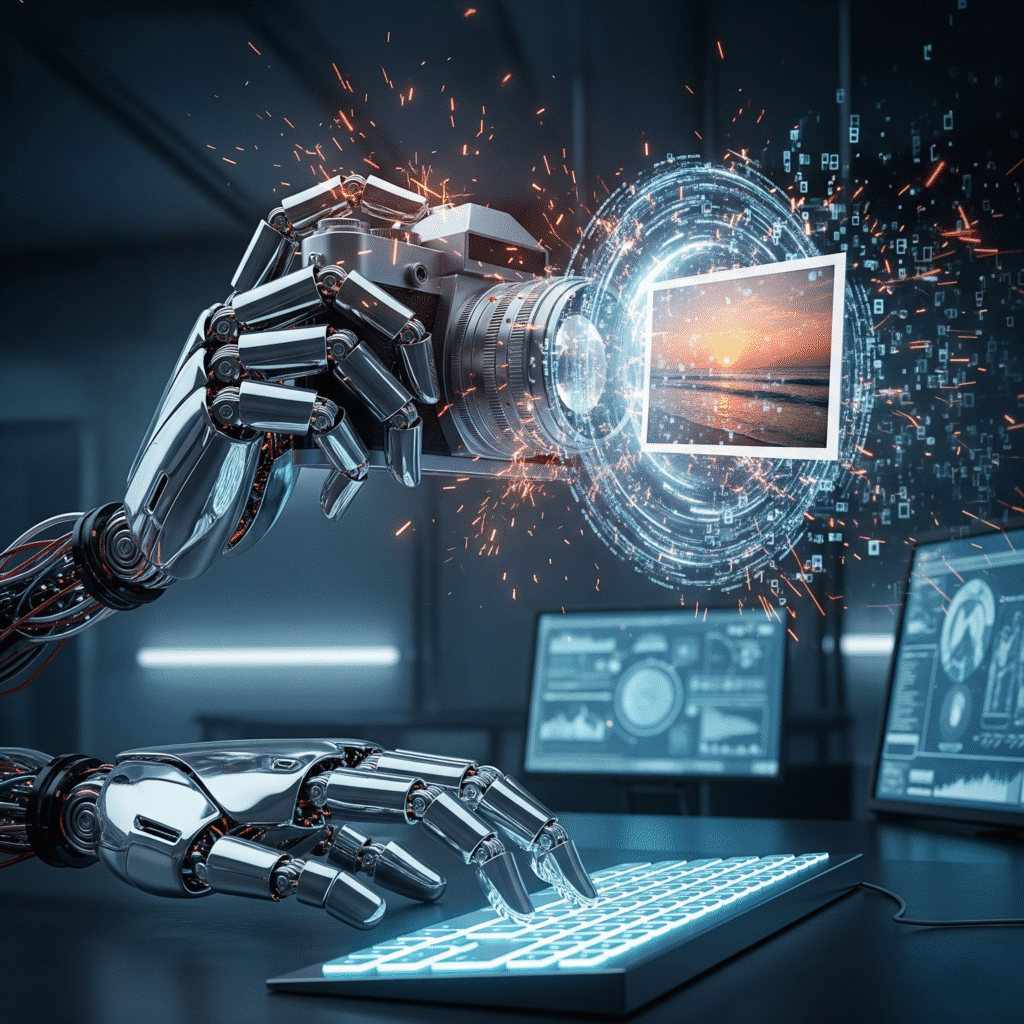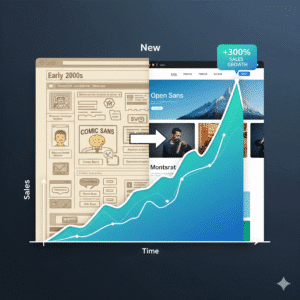In this post I’ll walk you through practical ways businesses are using artificial intelligence to create image and video ads, what worked and what didn’t in my tests, and how you can start applying these techniques without hiring a big production team.
Why AI for marketing assets?
AI lets small businesses produce professional-looking images and videos quickly and affordably. You can generate ad images, produce video ads, and even create AI-generated “people” or influencers to represent your brand. The big advantages are speed, lower cost, and flexibility — you don’t always need to hire actors, photographers, or large teams.
Two tools I tested: ChatGPT vs. Google Gemini
I tested two popular AI approaches in real ad scenarios: ChatGPT and Google Gemini. Here’s what I found.
ChatGPT (best for ad copy + image generation in my test)
- I asked ChatGPT to create a Facebook ad for a home remodeling service. It produced copy and then generated an image ad when I requested it.
- The image it produced included a realistic-looking person created by AI. That’s useful because “you don’t have to worry about using someone’s photo without permission” — since the person is AI-generated.
- ChatGPT kept the context in memory, so once it knew we were making a remodeling ad it could reuse details across requests.
Google Gemini (didn’t understand my request well)
- When I asked Gemini to generate a Facebook ad for home remodeling, it didn’t interpret the request as expected and returned something more like a logo or unrelated output.
- Bottom line: not every AI will understand advertising formats or deliver the output you expect. You’ll need to test different tools to see what fits your workflow.
Can ChatGPT create full videos?
Not directly. In my experiments, ChatGPT could help script an ad and suggest scenes, but it couldn’t generate a finished, downloadable video within the chat interface I used. For actual video production you typically need a dedicated video-AI platform — some of which are paid services (I referred to one called “Sora” in my tests) or other specialized tools like Synthesia, Pictory, or similar services.
So the workflow often looks like this:
- Use ChatGPT to write the ad script, captions, and scene descriptions.
- Use an AI video generator (paid or specialized tool) to produce the animated or actor-style footage.
- Edit the final video — trimming, reordering scenes, and adjusting voice / visuals as needed.
Real examples I made
I made a few ads to test the process. One was a Facebook-style ad and another was optimized for Instagram. Both were fully AI-generated — the people in them are not real. The results show you can run convincing social ads that look polished without hiring actors.
“Nobody in these videos is real — these people are generated by AI.”
However, be aware: these outputs rarely come out perfect the first time. You’ll often do some editing — cutting scenes, changing copy, fine-tuning visuals — before an ad is ready to run.
Step-by-step: Create an AI image ad
- Decide your campaign objective (awareness, leads, conversions).
- Ask an AI like ChatGPT for ad copy variations (headline, description, CTA).
- Request an image generation with a clear prompt (visual style, colors, people or no people).
- Review the generated image. If it includes AI people, you typically don’t need additional permissions.
- Export, upload to your ad platform (Facebook/Instagram), and run A/B tests with different headlines and images.
Step-by-step: Create an AI video ad
- Create the script and scene-by-scene directions with ChatGPT or another text AI.
- Choose an AI video generator that fits your budget (paid platforms often deliver better results).
- Generate the video and check for any awkward phrasing, lip-sync issues, or unnatural motion.
- Edit the video — trimming, improving pacing, adjusting voiceover or subtitles.
- Run small tests in your chosen ad networks and optimize based on performance data.
Practical tips and cautions
- Test tools first: Different AIs behave differently. Try multiple platforms to see which gives you the best results for images vs. video.
- Expect to edit: AI can get you most of the way, but human editing still improves quality.
- Legal and ethical considerations: AI-generated faces reduce permission issues, but always consider copyright for backgrounds, logos, or any recognizable brand assets.
- Quality vs. budget: Free or low-cost options may work for simple image ads, but better-looking videos typically come from paid platforms.
- AI influencers: Companies are creating AI influencers for promotions, but building a believable audience for that is another level and takes time.
Conclusion
AI is changing how businesses create marketing content. From image ads to full video spots, small teams can produce professional materials without hiring actors or big production crews. My tests showed ChatGPT is useful for generating ad copy and images (including AI-generated people), while other tools are required for full video production. Always plan for editing and testing, and choose the right paid or free tools based on your goals.
If you want to experiment, start with a single ad: use AI to write the copy, generate a few images, and run a small test campaign. You’ll learn faster by iterating than by waiting for perfect results.
If you enjoyed this breakdown and want more practical tips, follow my channel — Salazar Digital – Marketing & Web Design — for step-by-step guides and examples.
Salazar Digital Local Marketing
1172 Murphy Ave #208, San Jose, CA 95131
(408) 532-5118







